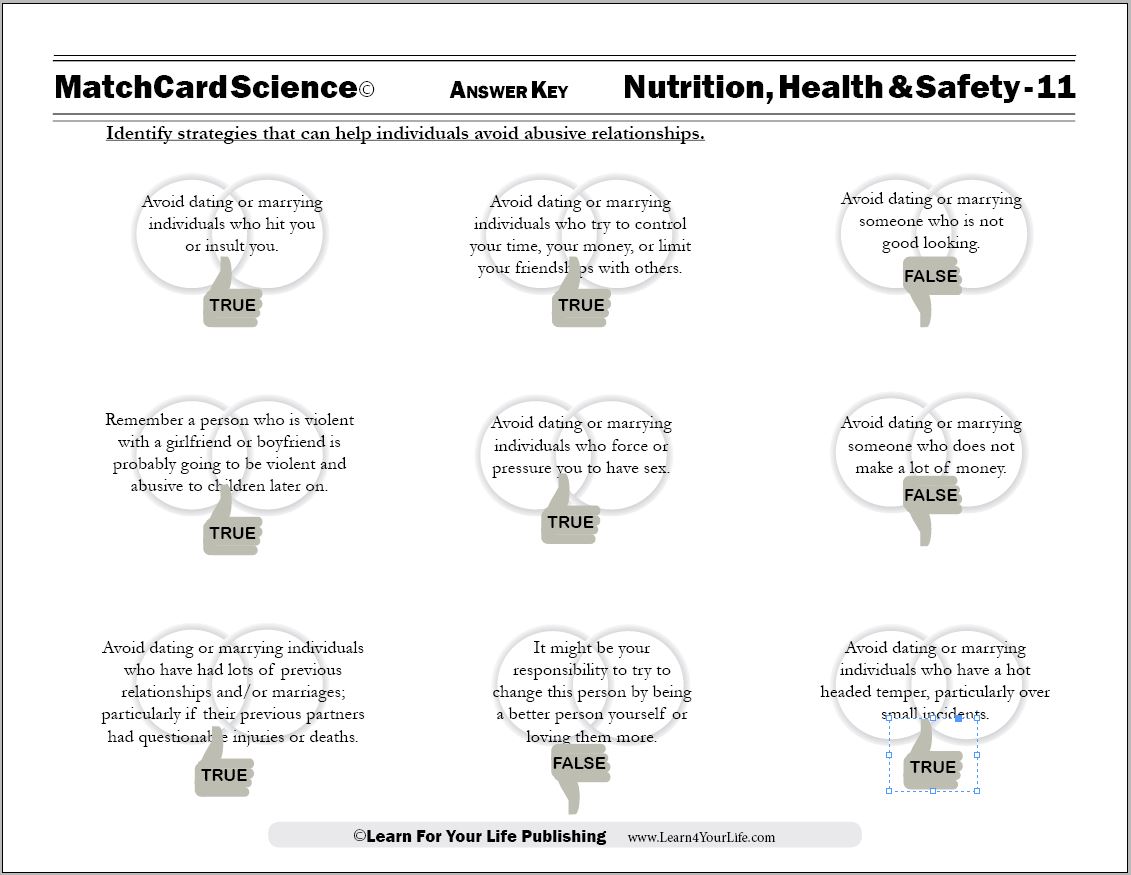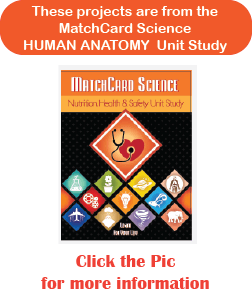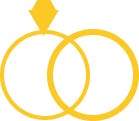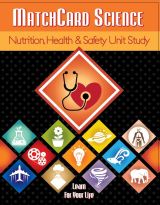Abusive Relationships Worksheet
This lesson presents information on abusive relationships with the goal of helping young people recognize potential abuse avoiding those relationships.
Free Download Below


MatchCard Science Abusive Relationships Worksheet
Objective: Identify strategies that can help individuals avoid abusive relationships.MatchCard: Download below.
MatchCard Information Pieces define and describe individuals who may or may not be high risk as abusers. Students mark the statements as true or false.
Print the Abusive Relationship MatchCard


Click image to go to download.
This is MatchCard #11 of the Nutrition, Health, and Safety Unit Study.
Find more information on MatchCard Science below.
Why Teach About Abusive Relationships in Middle School?
Unfortunately, abusers exist in our society and likely in all societies. They are not always easy to spot. Women who have been in terrible situations usually report how kind and caring the individual seemed at first.The goal of this lesson is to PREVENT abuse. How? By teaching the warning signs to students before they get into romantic relationships so they recognize dangere signs immediately.
Abusers generally believe they "own" the other person and have a difficult time allowing them to break off the relationship. The sooner their would-be victim recognizes the danger, the more likely they will be able to terminate the relationship without harm to herself.
Of course, we often think of abuse as occuring to females by male perpetrators, and statistically this is more often to be the case - but not always. It is invaluable to educate everyone about the characteristics that warn someone the relationship is unhealthy and dangerous.
In addition to preventing the student from becoming a victim, there is another goal in educating them about abuse. Fortunately, most of our kids will not be abused. But quite likely, a lot of them will be friends with someone who is. Their knowledge and support may be critical in helping another person avoid or escape a dangerous situation.
One more goal may be achieved by this lesson. Of course, none of us want our kids to grow up to be abusers. But if any do have any of these traits, this may be a good time for them to think about their attitudes and behaviors.
Let's Teach
What Is A Healthy Relationship
Opening Activity

- Love
- Trust
- Faith
- Shared Goals
- Open Communication
- Enjoying each other's conmpany
Unhealthy Relationships
Discussion
Discuss what an unhealthy relationship might be. Obviously, the oppositve of the goals listed above might be a starting point.You might list the qualities they state, but the poster and artwork aren't needed for this part of the activity.
Abusive Relationships
Some relationships are more than just unhealthy: they are abusive. In an abusive relationship one person starts to control the other. The abuse is often physical. But it might start non-physically, by emotionally or financially trying to control the other person.Ask the student(s) what they think an abusive relationship would be like. Use this discussion to introduce MatchCard #11. (see the link above to print)
Information on the Abusive Relationship MatchCard










Discussion Questions
- Why would one person think they should control or own another person.
- Do you think the danger signals would occur immediately when the relationship begins, a little later, or a long time after they meet. (Note: often in the first 6 -12 months but it obvious varies.)
- Often the perpetrator is a male and the victim is a female but not always. Why do you think this is?
- Since people aren’t perfect, relationships aren’t perfect. There is a difference between conflict between two people and abuse. There is also a difference between unhealthy relationship and abuse. How can you tell the difference?
- How do you think the person who is being abused feels?
- How do you think the abuser feels? Does he or she feel in control? Do they want to be in control?
- Does the abused individual have a responsibility to protect his/her/their children from the abuser? Does that responsibility start before the children are born?
- Where can the person who is abused turn to for help?
Role Play
Role play what you would say if you suspect a friend of yours is being abused.Just as it is possible to be abused, it is also possible to be falsely accused of abuse. How should someone respond?
MatchCard Science
How To Use MatchCards

Download the FREE MatchCard Science Instructor's Guide and see how MatchCards can make building their science knowledge base fun.
Nutrition, Health, and Safety Unit Study

See more about the Nutrition, Health, and Safety Unit Study.
12 Science Unit Studies

Chemistry is only one of twelve complete unit studies for kids in 3rd to 8th grade.
Comprehensive objectives, hands-on projects, suggested science fair experiments, and the fun game-like MatchCards keep them interested in learning science. See all twelve MatchCard Science Unit Studies.
About Our Site
Hands-On Learning













